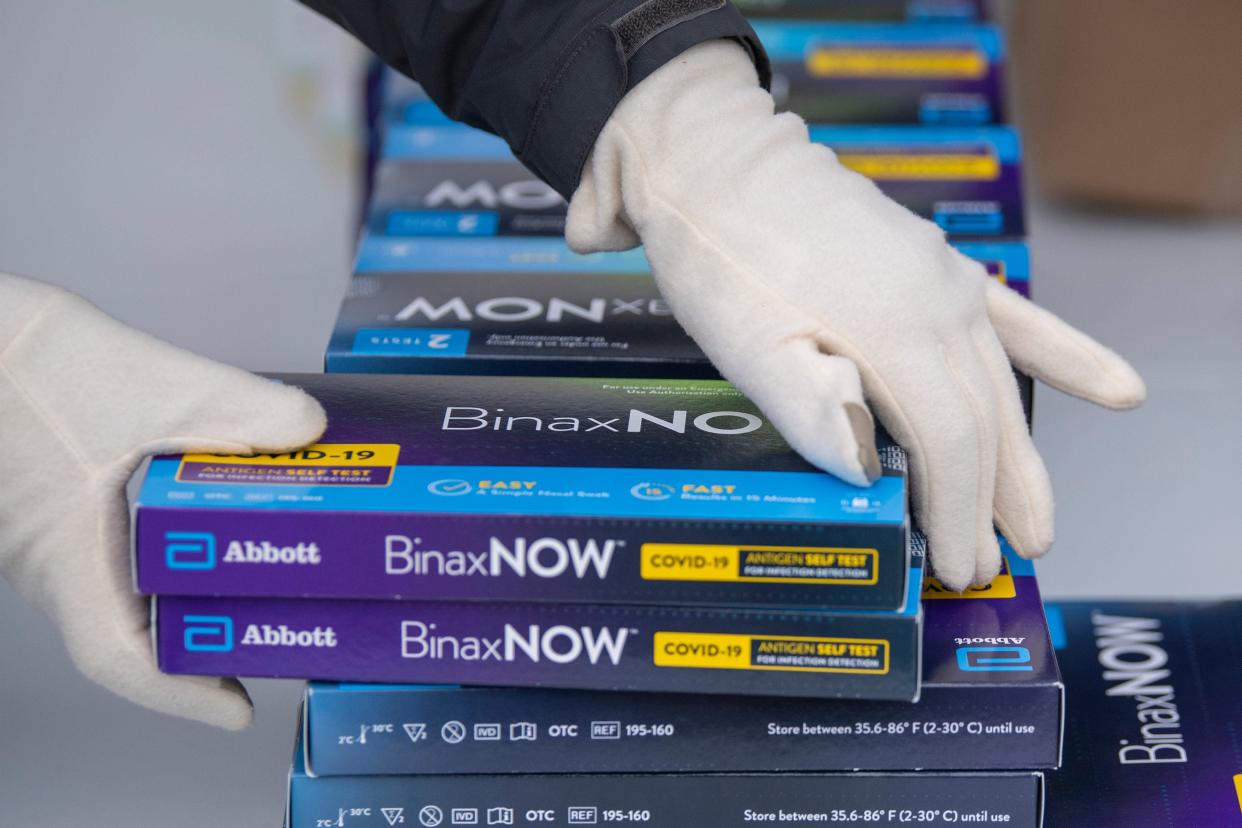COVID-19 at-home tests: How are insurance companies in Ohio paying for them?

Many Americans with private health plans now can get help with the cost of over-the-counter COVID-19 tests under a Biden administration directive forcing insurers to reimburse their policyholders for them.
In the days since its unveiling, insurers serving Ohio and other parts of the nation have moved quickly to implement the federal requirement. But the new systems have proved difficult to navigate for some policyholders.
Consumers can obtain rapid tests – up to eight a month are covered – at retail stores and pharmacies. If the store is part of their health plan’s rapid-test network, the test is free. If not, they can buy it and seek reimbursement.
And the steps involved are complicated.
First, consumers must figure out which, if any, retailers are partnering with their health plans and then pick up the tests at the pharmacy counter. As of Jan. 19, however, only a few insurance companies had set up that direct-purchase option – and nearly all the major participating pharmacies were sold out of eligible rapid tests.
As a result, people are left to track down and buy rapid tests on their own and then send receipts to their insurance providers. Meanwhile, 1 billion free tests sent directly by the federal government may not be in Americans’ hands for weeks.
Many of the country’s largest insurance companies provide paper forms that customers must print, fill out, and mail along with a receipt and copy of the box’s product code. Highmark, one of the largest Blue Cross and Blue Shield affiliates, for instance, has 16-step instructions for its online submission process that involves printing out a PDF form, signing it, and scanning and uploading it to its portal.
Only a few – including Anthem, which served 45% of Ohio's privately insured residents in large groups in 2019 – have online submission options.
Online forms also bring an additional problem. Nearly 1 in 4 households nationally and in Ohio don’t own a desktop or laptop computer, according to the Census Bureau.
Anthem and UnitedHealthcare, which were the top two insurers in every major Ohio health insurance market but Lima and Steubenville/Weirton, West Virginia in 2019, were part of a new Kaiser Family Foundation survey of 13 insurers who cover at least a million people. The survey, which didn't cover Cleveland-based Medical Mutual of Ohio, aimed to find out the reimbursement policies of those large insurers.
Anthem was among the 13 companies surveyed that are relying on reimbursement. So are Cigna, CVS/Aetna and Blue Cross Blue Shield of Michigan – and they all offer coverage in Ohio, according to the National Association of Insurance Commissioners.
Blue Cross Blue Shield of Michigan and Cigna require receipts and a form to be mailed in; Cigna also offers a fax option. Neither is requiring UPC bar codes to be included as required by some insurers surveyed. CVS Group/Aetna "does not describe the reimbursement procedure," the Kaiser Family Foundation survey said.
Other insurers have direct coverage options where policyholders can purchase rapid tests at an in-network or preferred pharmacy without paying upfront. Insurers among this group that operate in Ohio include Centene/Ambetter, Humana and UnitedHealth Group.
Centene/Ambetter, Humana and UnitedHealth all detail how enrollees can seek reimbursement for tests outside the preferred network. But only UnitedHealth has an online option.
Finally, Centene and UnitedHealth specify that claims outside their preferred networks are subject to a maximum reimbursement of $12 per test. Humana didn't list a maximum reimbursement amount out of network, according to the foundation survey
"Despite recent efforts to increase supply of tests, it can still be challenging to find a home COVID-test online and at pharmacies," the foundation's survey concludes. "If supply remains limited and tests are not widely available, a reimbursement or direct coverage mechanism does not do much to improve access."
The reimbursement program does not cover the 61 million beneficiaries who get health care through Medicare, or the estimated 31 million people who are uninsured. Medicaid and the Children’s Health Insurance Program are required to cover at-home rapid tests, but rules for those programs vary by state.
Since the early days of the pandemic, private insurers generally have been required to cover COVID-19 tests ordered by providers, typically those conducted on-site, such as in clinical or pop-up environments. Providers can also seek federal reimbursement for testing uninsured patients. The only exceptions are that private insurers do not have to reimburse for tests conducted for public health surveillance or workplace requirements, according to the foundation's survey.
Kaiser Health News is a nonprofit news service covering health issues. It is an editorially independent program of the Kaiser Family Foundation, which is not affiliated with Kaiser Permanente.
This article originally appeared on Cincinnati Enquirer: COVID-19 at-home tests: How are insurers in Ohio paying for them?

